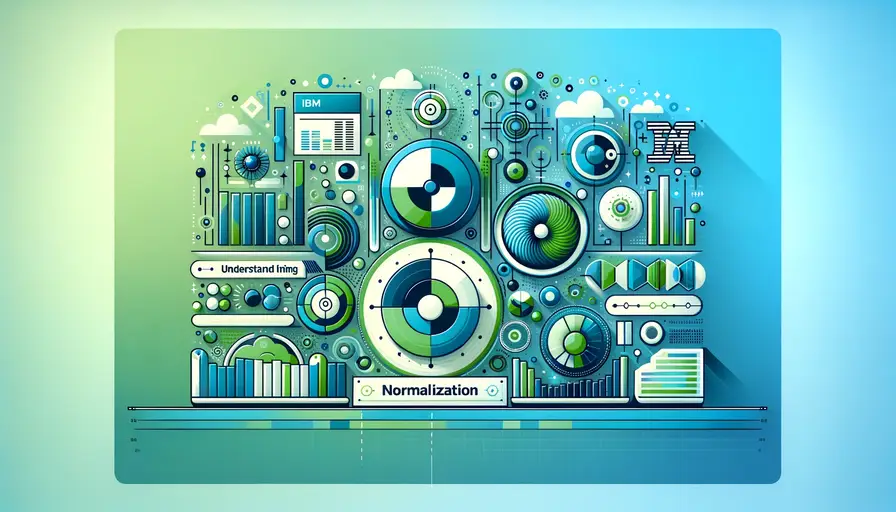
Demystifying K-means: Guide to Unsupervised Machine Learning

- Unsupervised Machine Learning
- Understanding K-means Clustering
- Applications of K-means Clustering
- Benefits of K-means Clustering
- Challenges in K-means Clustering
- Improving K-means Clustering
- Practical Applications of K-means
- Combining K-means with Other Techniques
- Future Directions in K-means Clustering
Unsupervised Machine Learning
Unsupervised machine learning is a type of machine learning where algorithms are used to draw inferences from datasets without labeled responses. This method is particularly useful for discovering patterns and relationships within data.
What is Unsupervised Learning?
Unsupervised learning refers to the use of machine learning algorithms to analyze and cluster unlabeled datasets. These algorithms discover hidden patterns or data groupings without the need for human intervention.
Importance of Unsupervised Learning
Unsupervised learning is crucial because it allows us to discover the inherent structure of the data. It is widely used in data exploration, anomaly detection, and clustering tasks, making it a foundational tool in data science.
Example: Unsupervised Learning in Action
Here’s an example of unsupervised learning using Python and Scikit-Learn:
 Unveiling Klaus Mueller: Exploring His Impact in Machine Learning
Unveiling Klaus Mueller: Exploring His Impact in Machine Learningimport numpy as np
from sklearn.datasets import load_iris
from sklearn.decomposition import PCA
import matplotlib.pyplot as plt
# Load dataset
iris = load_iris()
X = iris.data
# Apply PCA for dimensionality reduction
pca = PCA(n_components=2)
X_pca = pca.fit_transform(X)
# Plot the results
plt.scatter(X_pca[:, 0], X_pca[:, 1], c='blue')
plt.xlabel('Principal Component 1')
plt.ylabel('Principal Component 2')
plt.title('PCA of Iris Dataset')
plt.show()Understanding K-means Clustering
K-means clustering is one of the most popular unsupervised learning algorithms used for partitioning a dataset into a set of distinct, non-overlapping subgroups.
What is K-means Clustering?
K-means clustering aims to partition data into K clusters in which each data point belongs to the cluster with the nearest mean. It minimizes the within-cluster variance and helps to discover the underlying patterns in the data.
How Does K-means Work?
The K-means algorithm works by initializing K centroids randomly, assigning each data point to the nearest centroid, and then recalculating the centroids as the mean of all points in each cluster. This process iterates until the centroids no longer change.
Example: K-means Clustering in Python
Here’s an example of implementing K-means clustering using Scikit-Learn:
 The Surge of Automated Machine Learning
The Surge of Automated Machine Learningimport numpy as np
import matplotlib.pyplot as plt
from sklearn.cluster import KMeans
# Generate synthetic data
X = np.random.rand(100, 2)
# Apply K-means clustering
kmeans = KMeans(n_clusters=3, random_state=42)
kmeans.fit(X)
# Plot the results
plt.scatter(X[:, 0], X[:, 1], c=kmeans.labels_, cmap='viridis')
plt.scatter(kmeans.cluster_centers_[:, 0], kmeans.cluster_centers_[:, 1], s=300, c='red', marker='X')
plt.xlabel('Feature 1')
plt.ylabel('Feature 2')
plt.title('K-means Clustering')
plt.show()Applications of K-means Clustering
K-means clustering has numerous applications across various fields due to its simplicity and effectiveness. This section explores some common applications.
Customer Segmentation
Customer segmentation involves dividing a company's customers into groups that reflect similarity among customers in each group. K-means helps businesses understand their customer base and tailor marketing strategies accordingly.
Image Compression
K-means clustering is used in image compression to reduce the number of colors in an image. This technique helps in saving storage space and bandwidth while maintaining image quality.
Example: Image Compression with K-means
Here’s an example of using K-means for image compression using Python:
 Exploring Machine Learning Algorithms that Utilize Transformers
Exploring Machine Learning Algorithms that Utilize Transformersimport numpy as np
import matplotlib.pyplot as plt
from sklearn.cluster import KMeans
from sklearn.utils import shuffle
from skimage import io
# Load image
image = io.imread('path/to/image.jpg')
image = np.array(image, dtype=np.float64) / 255
# Reshape the image to be a list of pixels
w, h, d = original_shape = tuple(image.shape)
image_array = np.reshape(image, (w * h, d))
# Use K-means to compress the image
n_colors = 64
image_array_sample = shuffle(image_array, random_state=42)[:1000]
kmeans = KMeans(n_clusters=n_colors, random_state=42).fit(image_array_sample)
labels = kmeans.predict(image_array)
# Recreate the compressed image
image_compressed = np.zeros((w, h, d))
label_idx = 0
for i in range(w):
for j in range(h):
image_compressed[i][j] = kmeans.cluster_centers_[labels[label_idx]]
label_idx += 1
# Display the compressed image
plt.figure(1)
plt.axis('off')
plt.title('Compressed Image')
plt.imshow(image_compressed)
plt.show()Benefits of K-means Clustering
K-means clustering offers several benefits, making it a widely-used algorithm in unsupervised learning.
Simplicity and Speed
K-means is easy to implement and computationally efficient, making it suitable for large datasets. Its simplicity allows for quick learning and application.
Scalability
The algorithm scales well with the number of data points, making it suitable for large-scale clustering tasks. It performs well even with thousands of data points.
Example: Scalability of K-means
Here’s an example of applying K-means to a large dataset using Python:
 Understanding the Role of Decision Tree Nodes in Machine Learning
Understanding the Role of Decision Tree Nodes in Machine Learningimport numpy as np
import matplotlib.pyplot as plt
from sklearn.datasets import make_blobs
from sklearn.cluster import KMeans
# Generate synthetic data
X, _ = make_blobs(n_samples=10000, centers=5, n_features=2, random_state=42)
# Apply K-means clustering
kmeans = KMeans(n_clusters=5, random_state=42)
kmeans.fit(X)
# Plot the results
plt.scatter(X[:, 0], X[:, 1], c=kmeans.labels_, cmap='viridis')
plt.scatter(kmeans.cluster_centers_[:, 0], kmeans.cluster_centers_[:, 1], s=300, c='red', marker='X')
plt.xlabel('Feature 1')
plt.ylabel('Feature 2')
plt.title('K-means Clustering on Large Dataset')
plt.show()Challenges in K-means Clustering
Despite its advantages, K-means clustering has some challenges that need to be addressed for effective application.
Choosing the Right Number of Clusters
Selecting the optimal number of clusters (K) can be challenging. An incorrect choice can lead to poor clustering results.
Sensitivity to Initial Centroids
K-means is sensitive to the initial placement of centroids. Poor initialization can result in suboptimal clustering.
Example: Using the Elbow Method to Determine K
Here’s an example of using the Elbow Method to determine the optimal number of clusters:
 Artificial Intelligence
Artificial Intelligenceimport numpy as np
import matplotlib.pyplot as plt
from sklearn.datasets import make_blobs
from sklearn.cluster import KMeans
# Generate synthetic data
X, _ = make_blobs(n_samples=1000, centers=5, n_features=2, random_state=42)
# Apply K-means clustering with different values of K
sse = []
for k in range(1, 11):
kmeans = KMeans(n_clusters=k, random_state=42)
kmeans.fit(X)
sse.append(kmeans.inertia_)
# Plot the SSE values for different K
plt.plot(range(1, 11), sse, marker='o')
plt.xlabel('Number of Clusters (K)')
plt.ylabel('Sum of Squared Errors (SSE)')
plt.title('Elbow Method for Optimal K')
plt.show()Improving K-means Clustering
Several techniques can improve the performance and robustness of K-means clustering.
K-means++
K-means++ is an enhanced version of K-means that selects initial centroids more effectively. It improves the accuracy and convergence speed of the algorithm.
Silhouette Analysis
Silhouette analysis is used to evaluate the quality of clustering. It measures how similar a data point is to its own cluster compared to other clusters.
Example: Implementing K-means++
Here’s an example of using K-means++ initialization:
 Yoshua Bengio: Pioneering Contributions to Deep Learning for AI
Yoshua Bengio: Pioneering Contributions to Deep Learning for AIimport numpy as np
import matplotlib.pyplot as plt
from sklearn.datasets import make_blobs
from sklearn.cluster import KMeans
# Generate synthetic data
X, _ = make_blobs(n_samples=1000, centers=5, n_features=2, random_state=42)
# Apply K-means++ clustering
kmeans = KMeans(n_clusters=5, init='k-means++', random_state=42)
kmeans.fit(X)
# Plot the results
plt.scatter(X[:, 0], X[:, 1], c=kmeans.labels_, cmap='viridis')
plt.scatter(kmeans.cluster_centers_[:, 0], kmeans.cluster_centers_[:, 1], s=300, c='red', marker='X')
plt.xlabel('Feature 1')
plt.ylabel('Feature 2')
plt.title('K-means++ Clustering')
plt.show()Practical Applications of K-means
K-means clustering is widely used in various practical applications, from business intelligence to computer vision.
Market Segmentation
In market segmentation, K-means helps businesses segment their markets into distinct groups based on customer behavior, enabling targeted marketing strategies.
Anomaly Detection
K-means is also used in anomaly detection to identify unusual patterns in data. This is
particularly useful in fraud detection and network security.
Example: Anomaly Detection with K-means
Here’s an example of using K-means for anomaly detection:
import numpy as np
import matplotlib.pyplot as plt
from sklearn.cluster import KMeans
# Generate synthetic data with anomalies
X = np.random.rand(1000, 2)
X_anomalies = np.random.rand(50, 2) + 2 # Create anomalies
X = np.concatenate((X, X_anomalies))
# Apply K-means clustering
kmeans = KMeans(n_clusters=3, random_state=42)
kmeans.fit(X)
# Plot the results
plt.scatter(X[:, 0], X[:, 1], c=kmeans.labels_, cmap='viridis')
plt.scatter(kmeans.cluster_centers_[:, 0], kmeans.cluster_centers_[:, 1], s=300, c='red', marker='X')
plt.xlabel('Feature 1')
plt.ylabel('Feature 2')
plt.title('K-means Anomaly Detection')
plt.show()Combining K-means with Other Techniques
Combining K-means with other machine learning techniques can enhance its capabilities and extend its applications.
K-means and PCA
Combining K-means with Principal Component Analysis (PCA) can improve clustering performance, especially in high-dimensional data.
Hybrid Models
Hybrid models that integrate K-means with supervised learning algorithms can leverage the strengths of both approaches for more robust solutions.
Example: Combining K-means with PCA
Here’s an example of combining K-means with PCA:
import numpy as np
import matplotlib.pyplot as plt
from sklearn.datasets import load_iris
from sklearn.decomposition import PCA
from sklearn.cluster import KMeans
# Load dataset
iris = load_iris()
X = iris.data
# Apply PCA for dimensionality reduction
pca = PCA(n_components=2)
X_pca = pca.fit_transform(X)
# Apply K-means clustering
kmeans = KMeans(n_clusters=3, random_state=42)
kmeans.fit(X_pca)
# Plot the results
plt.scatter(X_pca[:, 0], X_pca[:, 1], c=kmeans.labels_, cmap='viridis')
plt.scatter(kmeans.cluster_centers_[:, 0], kmeans.cluster_centers_[:, 1], s=300, c='red', marker='X')
plt.xlabel('Principal Component 1')
plt.ylabel('Principal Component 2')
plt.title('K-means Clustering with PCA')
plt.show()Future Directions in K-means Clustering
The future of K-means clustering involves continuous improvement and adaptation to new challenges in data analysis and machine learning.
Scalability Improvements
Future advancements will focus on improving the scalability of K-means to handle even larger datasets efficiently. Techniques like distributed computing and parallel processing will play a crucial role.
Enhanced Initialization Methods
Research is ongoing to develop more sophisticated initialization methods that ensure better convergence and accuracy of K-means clustering.
Example: Distributed K-means Clustering
Here’s a conceptual example of implementing distributed K-means using Apache Spark:
from pyspark.sql import SparkSession
from pyspark.ml.clustering import KMeans
from pyspark.ml.feature import VectorAssembler
# Initialize Spark session
spark = SparkSession.builder.appName("Distributed K-means").getOrCreate()
# Load dataset
data = spark.read.csv('data.csv', header=True, inferSchema=True)
# Assemble features
assembler = VectorAssembler(inputCols=['feature1', 'feature2', 'feature3'], outputCol='features')
data = assembler.transform(data)
# Apply K-means clustering
kmeans = KMeans(k=3, seed=42)
model = kmeans.fit(data)
# Show cluster centers
centers = model.clusterCenters()
print("Cluster Centers: ", centers)
# Stop Spark session
spark.stop()K-means clustering remains a powerful and versatile tool in the realm of unsupervised machine learning. Its simplicity, scalability, and wide range of applications make it a go-to algorithm for many clustering tasks. While challenges exist, continuous advancements in initialization methods, combination with other techniques, and scalability improvements are driving the evolution of K-means clustering. By understanding and leveraging these advancements, data scientists and analysts can unlock new insights and achieve greater efficiency in data analysis.
If you want to read more articles similar to Demystifying K-means: Guide to Unsupervised Machine Learning, you can visit the Artificial Intelligence category.






You Must Read